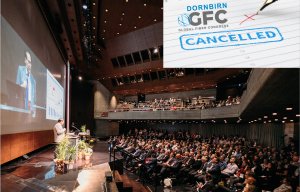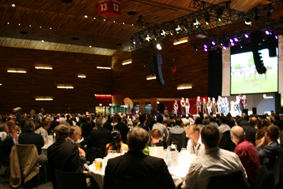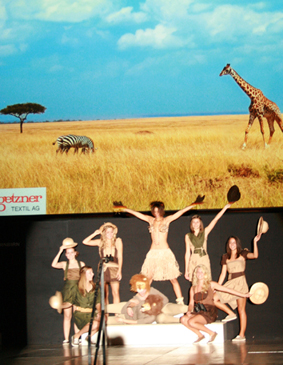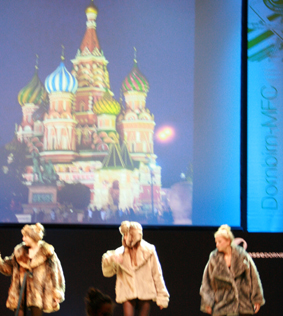
Dornbirn-GFC 2020 cancelled
There are historic reasons for the location of the Dornbirn Man-Made Fibers Congress (MFC) which drew 740 attendees from 30 countries to celebrate its 50th anniversary last week (September 14-16). The first of these meetings was opened on July 16 1962 by Rudolf Seidl, then-chief of Lenzing AG - the Austrian company which half a century on sees its fortunes boosted by a renewed global demand for cellulosic fibres and is still very actively involved in the annu

19th September 2011
Knitting Industry
|
Dornbirn

There are historic reasons for the location of the Dornbirn Man-Made Fibers Congress (MFC) which drew 740 attendees from 30 countries to celebrate its 50th anniversary last week (September 14-16).
The first of these meetings was opened on July 16 1962 by Rudolf Seidl, then-chief of Lenzing AG - the Austrian company which half a century on sees its fortunes boosted by a renewed global demand for cellulosic fibres and is still very actively involved in the annual event.
Lenzing is now greatly profiting from its commitment to fibre technology, while virtually all the other similar European corporations - the UK's Courtaulds, Rhone-Poulenc of France and Germany's Hoechst among them - have been consigned to the history books.
 The location of the first Dornbirn-MFC, however, was more than coincidence, Professor Hilmar Fuchs of the Saxony Textile Institute (STFI) explained at this year's conference.
The location of the first Dornbirn-MFC, however, was more than coincidence, Professor Hilmar Fuchs of the Saxony Textile Institute (STFI) explained at this year's conference.
"A year earlier, the Berlin Wall had been erected, with great animosity between the two political systems," he said. "As a result of the strong growth of synthetic chemical fibres, however - and with the USA and UK taking the lead - it was recognised that divided or not, Europe urgently needed a forum for exchanging research results.
"The success of polyamide, polyester, acrylics and polyolefin fibres was leading to many novel new textile products and technologies, as well as to a significant increase in plant engineering for chemical fibres and textile machinery engineering."
Austria represented a neutral site at which experts from both East and West could come together and share knowledge.
"For nearly three decades the Wall was a visible symbol of the Iron Curtain and the separation of Europe, from the Northern Sea down to the Mediterranean," said Professor Fuchs. "In these years, Europe was several times closer to war than to peace and the Dornbin Congress, with the support of CIRFS, was true to the greater political aim of change by harmonisation."
In 1989, when the Iron Curtain finally came down, Dornbirn had a further contribution to make in bringing together the European countries in the enlarged European Union, Professor Fuchs said.
 "Since that time, territorial openness towards America, Japan, China and India has also taken place and nowadays the conference plays an important role in the globalisation of research."
"Since that time, territorial openness towards America, Japan, China and India has also taken place and nowadays the conference plays an important role in the globalisation of research."
The debut of the Dornbirn conference was certainly timely - the 1960s saw the unprecedented expansion of synthetic fibres, which at the start of the decade represented just 5%, or 750,000 tons of the total 14.9 million tons of fibres produced in 1960.
By 1965, the share of synthetics had climbed to 8%, then to 17% in 1970 and to 24% in 1975. Growth has continued ever since and today, of the 80.8 million tons of fibre produced globally, synthetics represent 56%, or around 45.2 million tons.
But the past, as they say, is another country.
"Despite some pleasant memories, resting on our laurels by sentimentally turning to the past cannot do justice to the dynamic day and age in which we are living," said Friedrich Weiner, President of the Austrian Man-made Fibers Institute (Austrian-MFI), in opening this year's conference.
"For this reason, we are concentrating on the future and the next fifty years. There is clearly a need for visionary thinking. New developments, functional textiles, technical textiles, innovative approaches to finishing, strategic partnerships and the hugely important future issue of sustainability dominate."

Business intelligence for the fibre, textiles and apparel industries: technologies, innovations, markets, investments, trade policy, sourcing, strategy...
Find out more